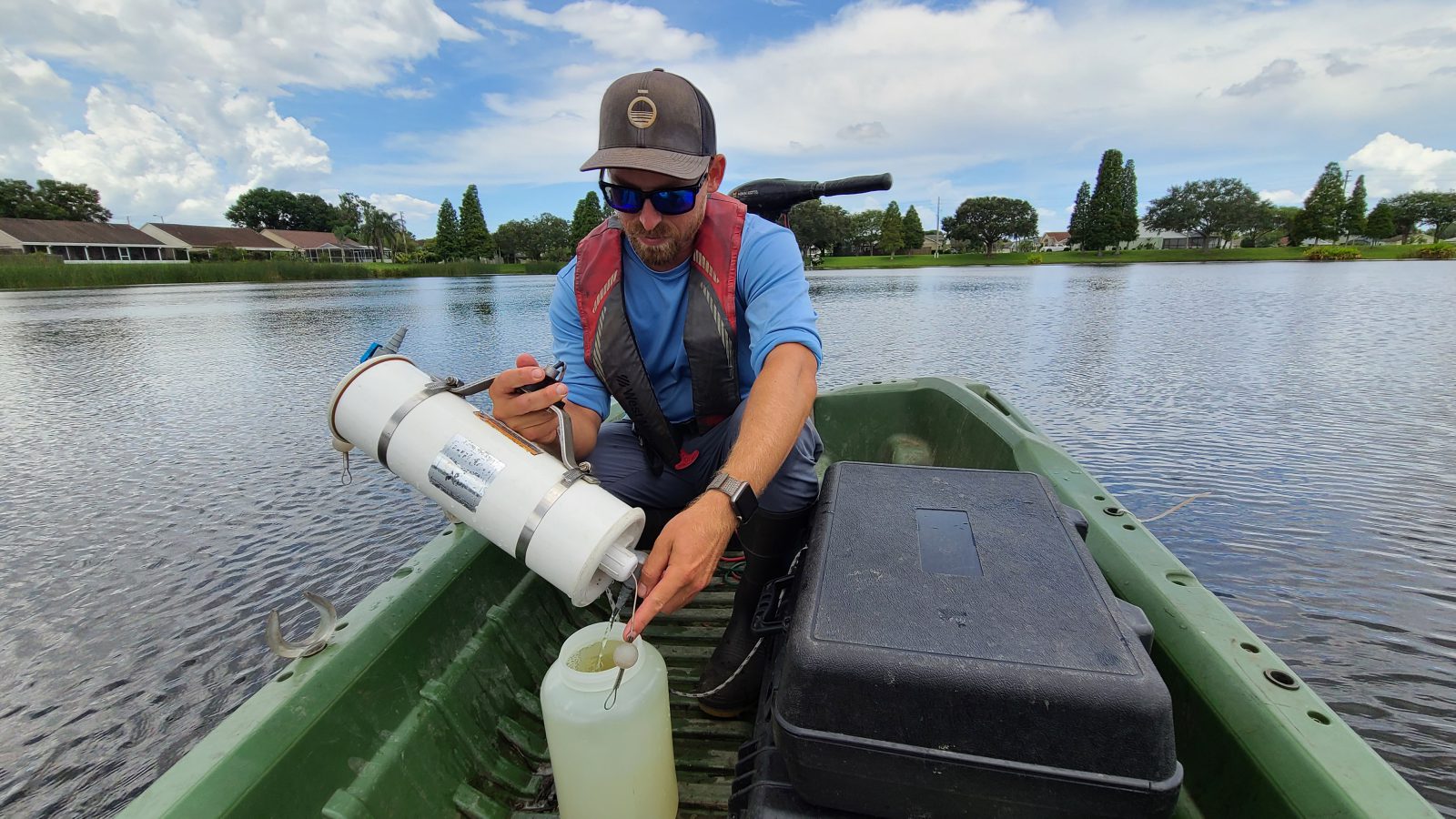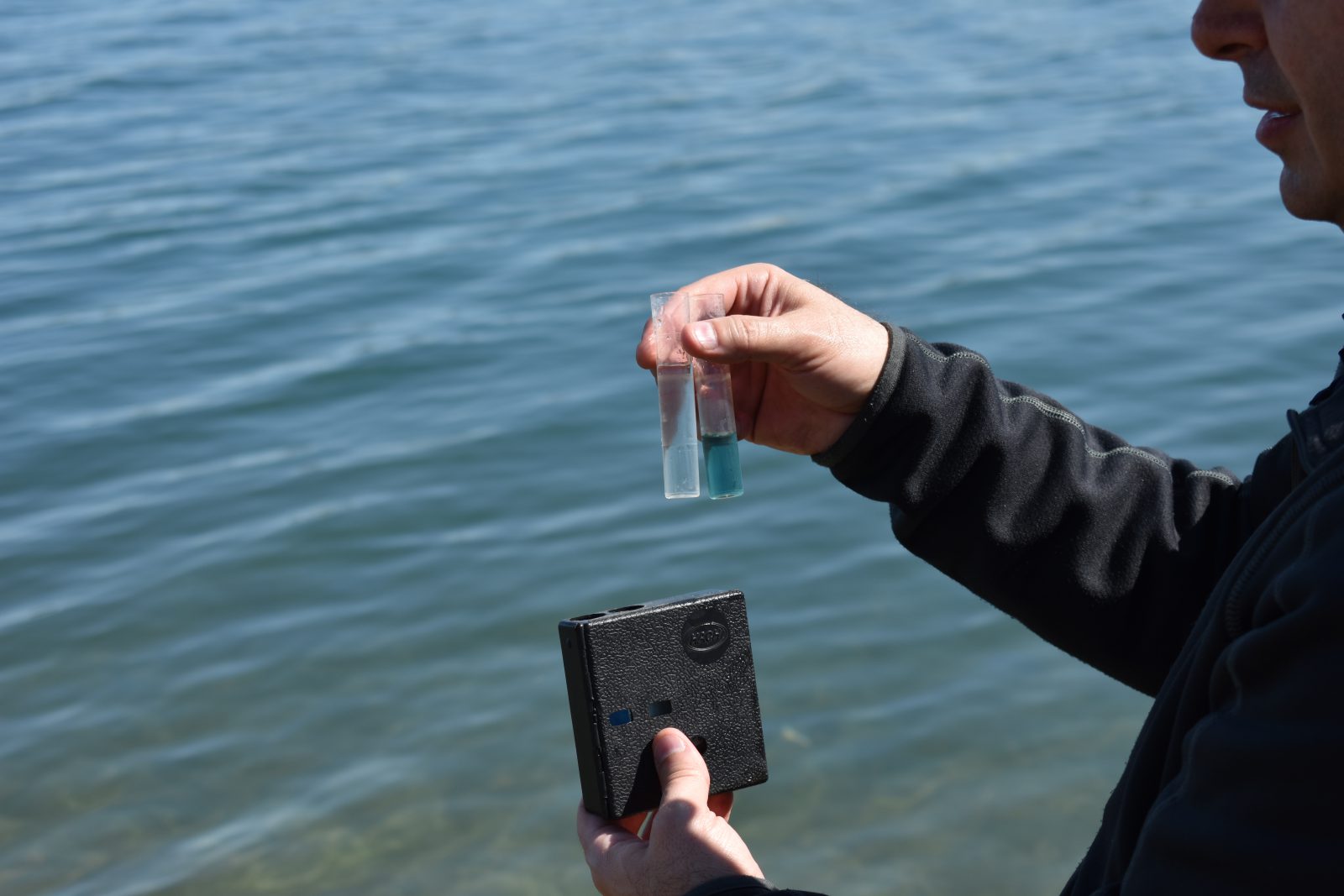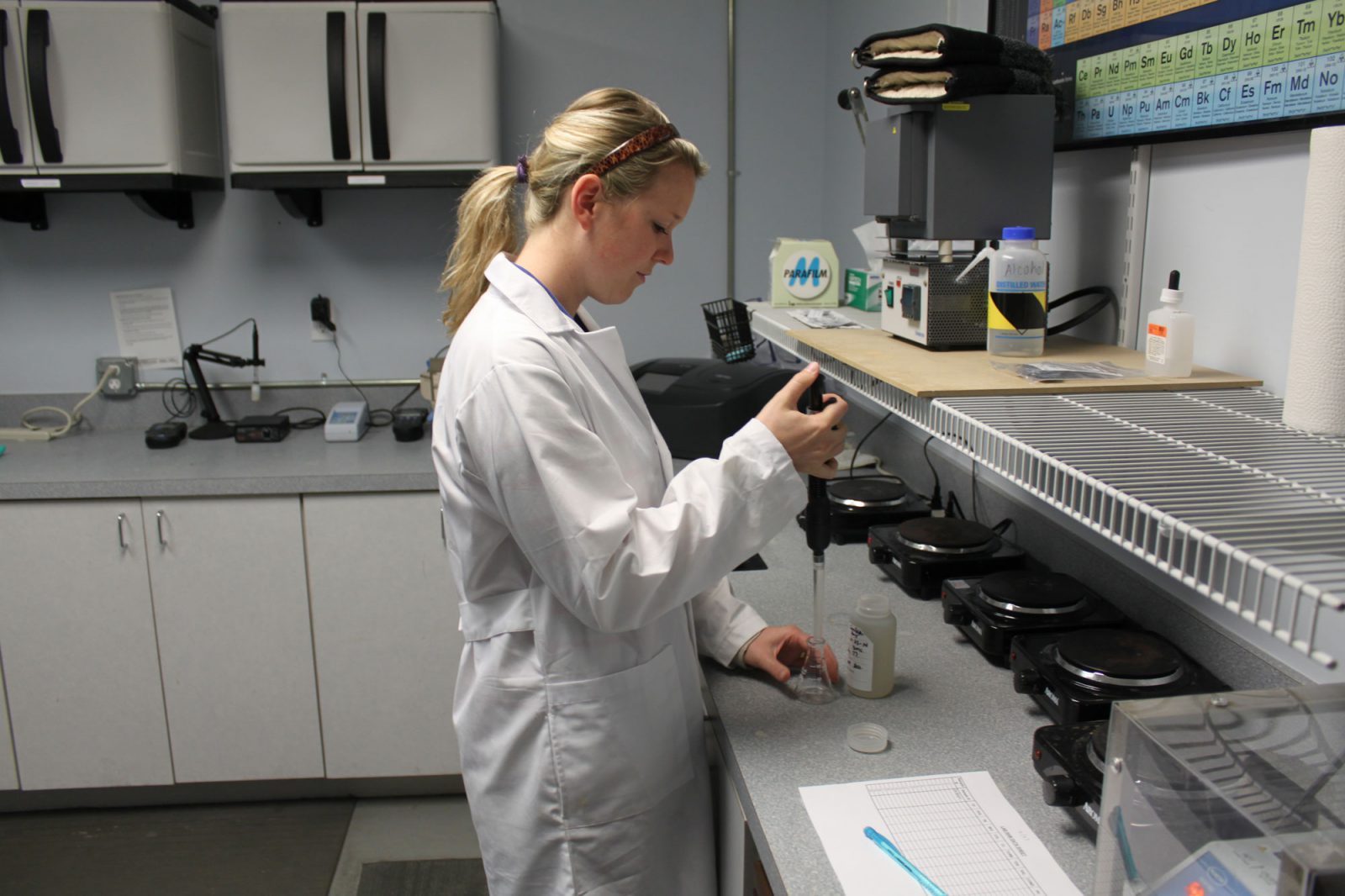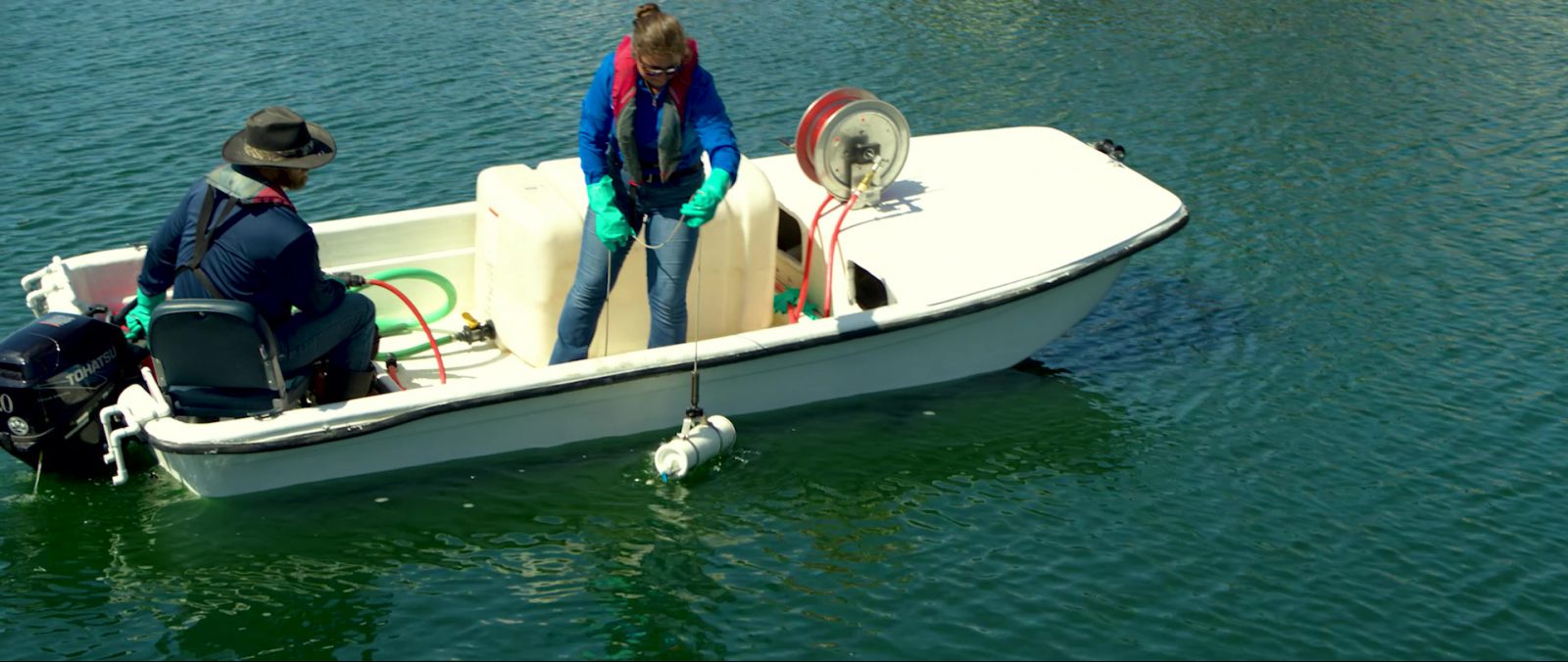
What is water quality management – and what goes into it?
It’s certainly not groundbreaking that all living organisms – algae, plants, insects, animals and humans – need and use water. It plays an essential role in every aspect of survival. However, if there is one thing that matters more than the availability of water, it’s the quality of water.
Water quality directly influences the overall well-being of life. Therefore, proper attention should be given to the management of water quality in our communities to ensure they are kept healthy, functional, and enjoyable for all that rely on them. Unfortunately, this is easier said than done. Stakeholders and decision-makers face many challenges when it comes to the maintenance of their water resources, but finding a reliable partner can help keep frustrating water quality problems off their plate.
What does water quality mean?
Water quality can be thought of as a data-backed statement of how balanced and functional a waterbody is for its intended purpose – whether that’s recreation, drinking water, irrigation, stormwater collection, or simply aesthetics. Water quality encompasses a myriad of data measurements, sometimes referred to as key water health indicators. These comprise the physical, chemical, and biological characteristics of a waterbody based on its usage, as well as direct and indirect impacts on flora and fauna. It is the baseline that informs which water management practices are implemented and how their successes are measured.
Water quality and its associated water health indicators help determine the:
- Health of ecosystems
- Extent of pollution
- Safety of human and animal contact
- Condition of drinking water
It’s influenced by three primary sources – the surrounding ecosystem, local geology (the minerals, sediment, and porosity of the area’s geogenic factors) and human contributions (the pollution, usage, impacts from rural development, and suspended sediment).
Why is water quality important?
Even beyond the biological necessity for water, balanced water quality is vital to the performance of lakes, ponds, and stormwater systems. For example, certain species can only flourish under excellent water quality conditions. Their presence – or lack thereof – can be a key indicator of ecosystem health.
Other common needs for balanced water quality include:
- Human Health: The World Health Organization (WHO) reports that over 80% of diseases are due to drinking contaminated water. Dedicated water quality monitoring and management of the source water used in reservoirs helps ensure that drinking water is not only free of contaminants, but also free of undesirable taste and odor compounds.
- Wildlife Protection: Water quality monitoring helps identify pollutants and sources of pollution, allowing stressors to aquatic life to be recognized and addressed.
- Sustainability: Waterbodies that have been impacted by heavy urban development and land usage may be negatively impacted, resulting in significant water quality impairments. Monitoring and tailored management are effective tools to improve water quality conditions and maintain a healthy ecosystem.
- Public Safety: Diligent water monitoring and management protect public health by ensuring that water is clean, functioning optimally, and safe from threats like toxic algae, weeds that can entangle boat motors and swimmers, and flooding during heavy rainstorms.
So, what standard should the key health indicators of a waterbody meet when it comes to water quality?
The U.S. Environmental Protection Agency (EPA) has developed drinking water quality standards that promote public health and safety. Often, Maximum Contaminant Levels (MCL’s) are also established to aid with this. While most of these regulations pertain to drinking water, municipalities, nonprofits, and watershed groups may establish their own standards to maintain water that directly impacts their communities. With this in mind, the data that is collected and interpreted can be used to customize management according to the water’s specific purpose. This is all accomplished through ongoing water quality monitoring by aquatic scientists and experts.
What goes into water quality management and monitoring?
Water quality management consists of an ongoing cycle aimed at improving and maintaining optimal water quality for a specific body of water. This cycle starts by determining what standards it needs to meet and testing key health indicators to accurately determine where they currently stand. This information and data are then analyzed by aquatic experts to determine what needs improvement and which solutions are necessary. This may consist of aquatic plant management treatments via herbicide or mechanical harvesters, nutrient remediation solutions, aeration systems, dredging, biological augmentation, or conservation practices that implement best management practices within watersheds. Once balance is achieved, consistent monitoring and management will help ensure it continues to meet your goals.
Key elements of water quality management
There are three major aspects to a water quality monitoring program…
Physical Monitoring:
This monitoring focuses on assessing the physical features of a waterbody through sensory observation; that is, inspecting environmental properties that are detectable by the senses. This refers to water flow, width, and depth. Physical indicators of water quality also include:
Color – Pure water is colorless. However, the presence of certain minerals in water can bring about color in waterbodies. For example, an iron-rich body of water may be reddish-brown. Green or blue water with an oily or “paint-like” appearance may indicate the presence of algae or Harmful Algal Blooms that can produce dangerous and deadly toxins.
Turbidity – A turbid waterbody is one that is clouded due to the presence of solid and colloidal suspensions. Turbidity measurements often indicate water quality conditions based on clarity and calculated total suspended solids in the waterbody.
Temperature – Temperature describes how hot or cold a body of water is. Water temperature is crucial in assessing water quality as it influences other physical, chemical, and biological properties of a body of water.
Odor – Oftentimes, odors in lakes and ponds are due to various biological activities: the action of microorganisms, decaying organic matter, algae, industrial activities, etc.
Chemical Monitoring:
Various chemical key water health indicators can also be tested and monitored. This approach is key in identifying specific pollutants, determining sources of pollution, and formulating effective solutions. Some of these key water health indicators include:
Dissolved Oxygen: Dissolved oxygen (DO) measures the amount of oxygen available to sustain life in an aquatic ecosystem. Lower concentrations of dissolved oxygen may be due to excessive algal growth and increased levels of organic waste decay. Low DO is a stressor to aquatic plants, fish, and other aquatic species, while high DO supports a flourishing ecosystem.
PH – PH is the measure of hydrogen ion concentration in a body of water. The pH scale ranges from 0-14. 7 is neutral, 0-3 is considered highly acidic, and 9-14 is highly alkaline. Ideally, water pH should fall between 6.5-8.5.
Total Phosphorus and Nitrates – Phosphorus is counted as the limiting nutrient in aquatic ecosystems, meaning it directly impacts the growth of algae and aquatic plants. Thus, it’s an essential element in water quality monitoring. Nitrates are a form of nitrogen, which is an essential element for aquatic plant and animal life. Nitrates promote plant growth and, in the right levels, are beneficial to water. However, an excess of nitrates, along with phosphorus, can be dangerous. Together, they may cause eutrophication (imbalanced nutrient levels) and raise biological oxygen demand, decreasing the DO available for use in the aquatic ecosystem.
Secchi Disk Test and Depth – A Secchi disk test is used to measure the clarity of water. The actual disk is lowered into the water until it is no longer visible. This depth is measured and known as the Secchi depth and reveals the turbidity of the water column.
Total Suspended Solids (TSS) – A measure of the solid materials suspended in water, including silt, plankton, and industrial waste residue that can absorb light and inhibit plant growth. This residue largely comes from stormwater runoff, sediment erosion, and nuisance algae growth.
Conductivity – Conductivity refers to the water’s ability to pass an electrical current and is affected by its temperature: the warmer the water, the higher the conductivity. Fluctuating conductivity rates can indicate that a discharge or other source of pollution has infiltrated the waterbody.
Biological Monitoring:
This aspect of monitoring uses the health of the fauna and floras, such as macroinvertebrates, present in the body of water as a measurement of water quality health. Generally, macroinvertebrates have limited migration patterns and, as such, may be used to assess the health of a local waterbody, as well as project the type and degree of pollution in an aquatic ecosystem. Biological monitoring also assesses various biological matrices such as algal growth, fish sampling, and invertebrate sampling.
Chlorophyll-a – This refers to a measure of the number of algae within a waterbody and can be used to classify the trophic condition (biological activity) of it. Excess amounts can cause bad odors, scum build-up, and low DO levels.
Pollution Sensitivity – Certain organisms can only inhabit unpolluted water due to their high sensitivity to pollution, while others may survive well in polluted water. The numbers of each group of macroinvertebrates indicate the health and purity of the water. The presence of large numbers of pollution-sensitive organisms in a body of water is an indicator of water health. On the other hand, large amounts of pollution-tolerant species and the absence of or minimal presence of sensitive species suggest severe pollution.
Build A Water Quality Management Plan
Ready to take a deep dive into the health of your waterbody? Click to learn about our comprehensive water quality testing reports. Maintaining healthy water quality can help you achieve the lake or pond you’ve been dreaming of. When water quality is more balanced, problems like algae and aquatic weeds are less likely to develop. Take the first step to achieving beautiful water with a water quality monitoring program.
Discover the Benefits of Water Quality Testing
Achieve Healthy Water Quality with SOLitude
Call us at 888-480-5253 or complete the form below to connect with an aquatic management expert.
SOLitude Lake Management is a nationwide environmental firm committed to providing sustainable solutions that improve water quality, enhance beauty and preserve natural resources.
SOLitude’s team of aquatic scientists specializes in the development and execution of customized lake, stormwater pond, wetland and fisheries management programs. Services include water quality testing and restoration, algae and aquatic weed control, installation and maintenance of fountains and aeration systems, shoreline erosion control, muck and sediment removal and invasive species management. SOLitude partners with homeowners associations, golf courses, private landowners, businesses and municipalities. SOLitude Lake Management is part of Rentokil, a leading business services company, operating across the United States, Canada and Puerto Rico.
For more information, visit SOLitude Lake Management at solitudelakemanagement.com, and connect on Facebook, LinkedIn and Twitter.














